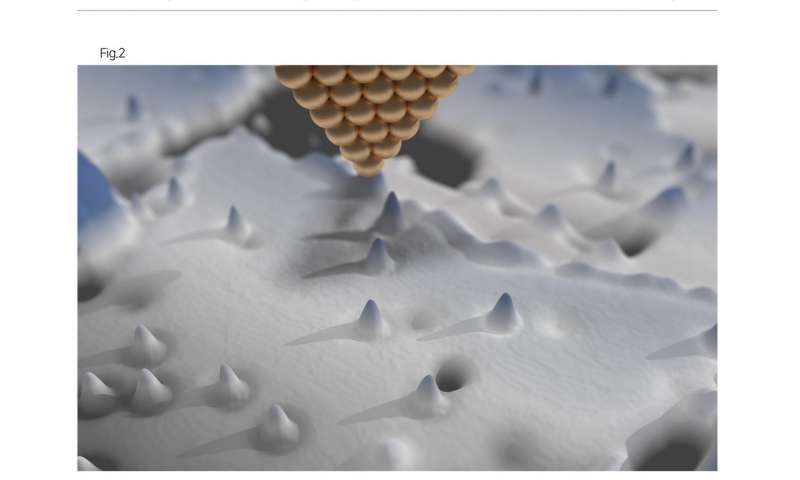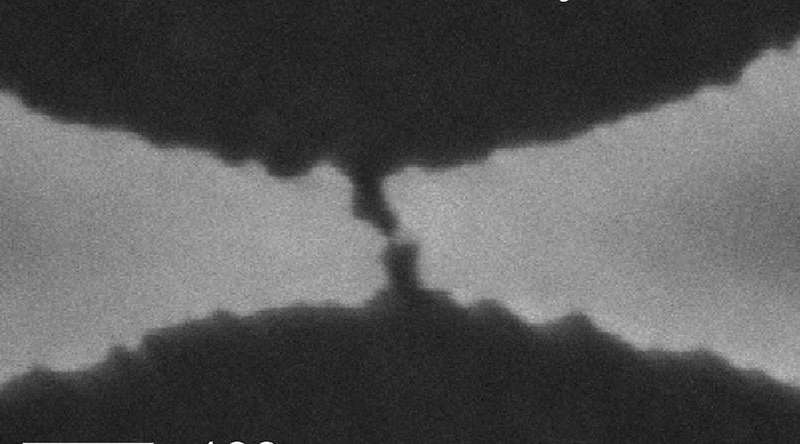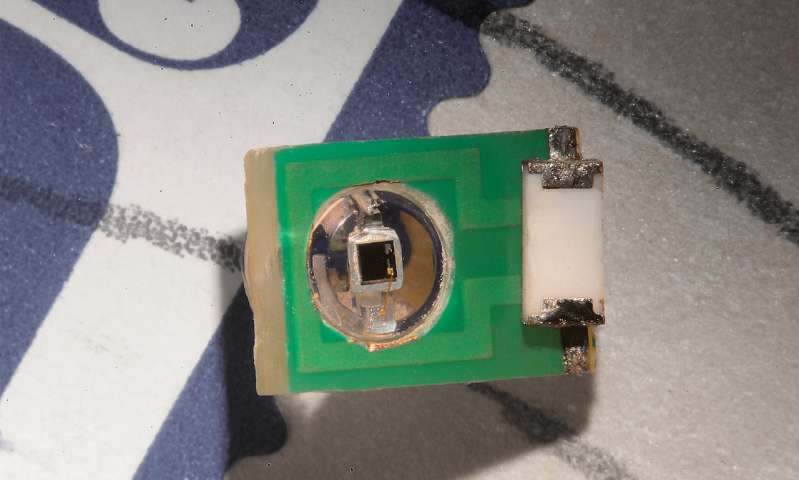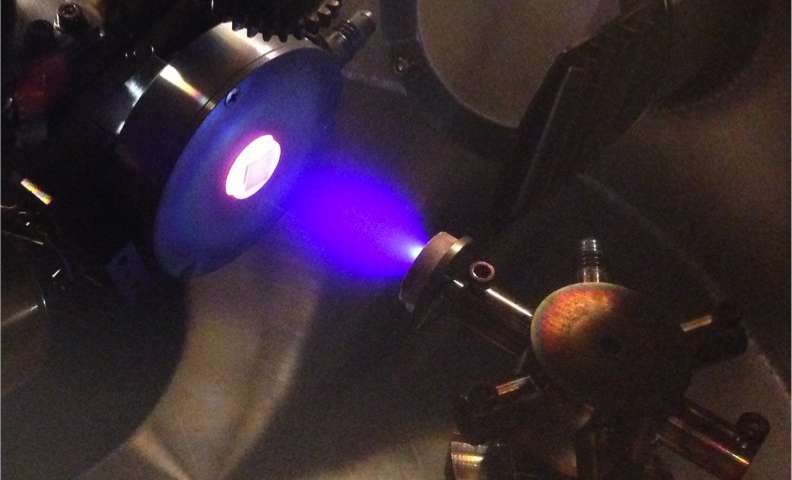
Researchers at the Center for Quantum Nanoscience (QNS) within the Institute for Basic Science (IBS) in South Korea have made a major scientific breakthrough by detecting the nuclear magnetism, or “nuclear spin” of a single atom. In an international collaboration with IBM Research, the University of Oxford and the International Iberian Nanotechnology Laboratory, QNS scientists used advanced and novel techniques to measure the nuclear spin of individual atoms on surfaces for the first time.
Normally the nuclear spin, which describes the magnetism of the atom’s core, can only be detected in very large numbers. The findings, published today in the journal Science, show that this is now also possible for single atoms on a surface. To do that the team used a Scanning Tunneling Microscope at IBM Research, which consists of an atomically sharp metal tip and allows researchers to image and probe single atoms.
The two elements that were investigated in this work, iron and titanium, are atoms that can have a different number of neutrons in the atom’s core, these are the so-called isotopes. Only certain isotopes of each element have a core with a nuclear spin. It is normally exceedingly hard to measure nuclear spins of individual atoms. Traditionally large numbers of nuclear spins are required, making this advancement so noteworthy.
In order to detect the presence of a nuclear spin within the core of a single atom, the team made use of the hyperfine interaction. This phenomenon describes the coupling between a single atom’s nuclear spin and its electron counterpart, that is generally much easier to access. Dr. Philip Willke of the Center for Quantum Nanoscience (QNS), first author of the study, says: “We found that the hyperfine interaction of an atom changed when we moved it to a different position on the surface or if we moved other atoms next to it. In both cases, the electronic structure of the atom changes and the nuclear spin allows us to detect that.”
The researchers plan to use this sensitivity of the hyperfine interaction within the chemical environment as a quantum sensor. “Nuclear spins are already used for biological imaging in MRI machines in hospitals.” says Dr. Yujeong Bae also of QNS, a co-author in this study. “Similarly, in our experiment the nuclear spin allows us to measure properties of the electronic structure of atoms and molecules that would otherwise remain hidden.”
In the longer term, researchers at QNS want to store information in the atom’s nuclear spin. Last year, the same collaboration with IBM succeeded in storing, reading and writing a bit of digital information using the electron spin of only a single Holmium atom. In the same manner, nuclear spins could serve as bits at the subatomic scale. The team also plans to use their technique to test pathways for quantum computation. While still in early development, quantum computation promises to vastly outperform classical computers in tasks such as database management, search, and optimization. Nuclear spins are excellent candidates for these quantum bits, since they are well-isolated from the environment through the atomic shell, a requirement for quantum information devices.
“I am very excited about these results. It is certainly a milestone in our field and has very promising implications for future research.” says Prof. Andreas Heinrich, Director of the QNS. “By addressing individual nuclear spins we can gain deeper knowledge about the structure of matter and open new fields of basic research.”





